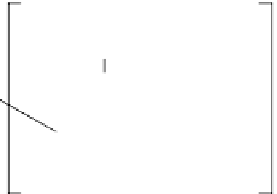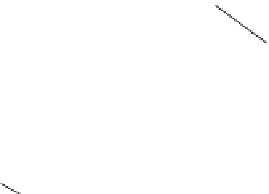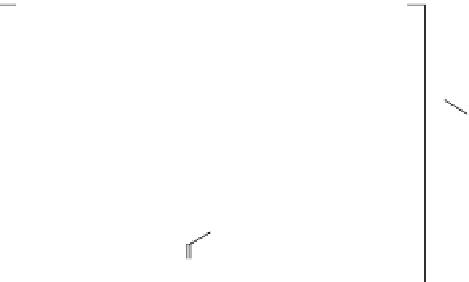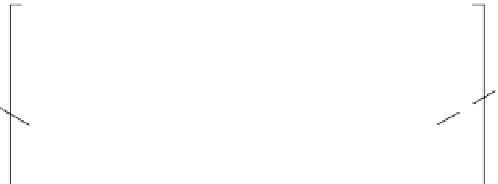Biomedical Engineering Reference
In-Depth Information
charged collagen molecules or fi brils can be used to build biocompatible fi lms with polycations
through LbL self-assembly [34]. Adjusting assembly pH conditions such as at pH 4, collagen type
IV was positively charged and could be alternatively assembled with PAA to form multiple layers
for cell attachment [35]. Polysaccharides are abundant in nature and possess excellent biocom-
patibility and biodegradability. A few commonly used polysaccharides are dextran, CH, alginic
acid, hyaluronic acid, and heparin (Figure 10.3). Dextran, a polysaccharide already used as a blood
replacement through i.v. injection, has unique properties such as long circulation time due to the
least uptake by the reticulo-endothelial system (RES). It may be an appropriate candidate for build-
ing LbL self-assembled drug carriers. Also, a wide choice of molecular weight of dextran, from
a few thousand to a few million daltons, provides more options for different applications. CH, a
positively charged polysaccharide, is widely used for gene delivery and would be useful to build
CH/protein or CH/DNA multilayered structures.
Other materials such as lipids and organic and inorganic nanoparticles (magnetite, quantum
dot, gold, etc.) can also be incorporated into self-assembled structures. The polyion/nanoparticle
hybrid structures are unique and may have physical properties similar to that of natural materials.
CH
2
OH
O
H
O
H
O
OH
H
H
NH
+
H
n
Chitosan
COO
−
O
H
H
CH
2
OH
O
OH
H
O
H
O
H
H
H
OH
O
H
OH
H
H
HN
CH
3
O
n
Hyaluronic acid
CH
2
OSO
3
−
H
O
O
H
H
H
H
COO
−
H
OH
H
OH
H
O
O
OSO
3
−
NHOSO
−
H
H
n
Heparin
FIGURE 10.3
Structural formula of three polysaccharides: chitosan, hyaluronic acid, and heparin.


































































